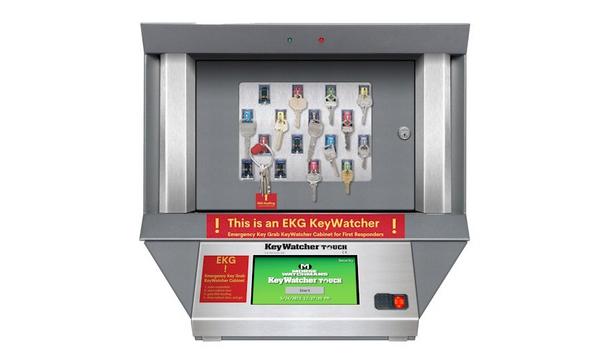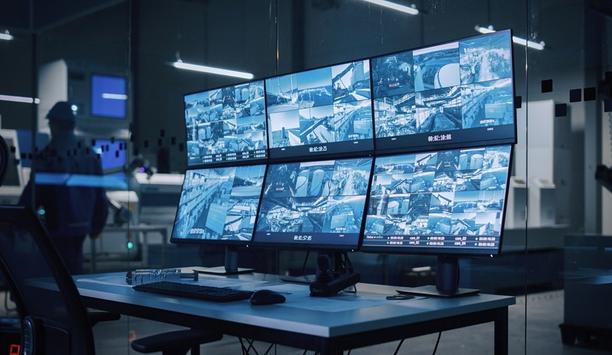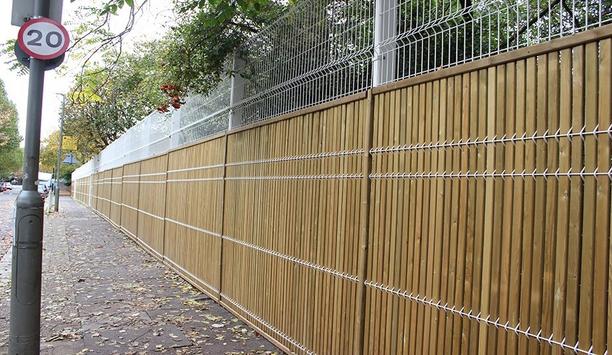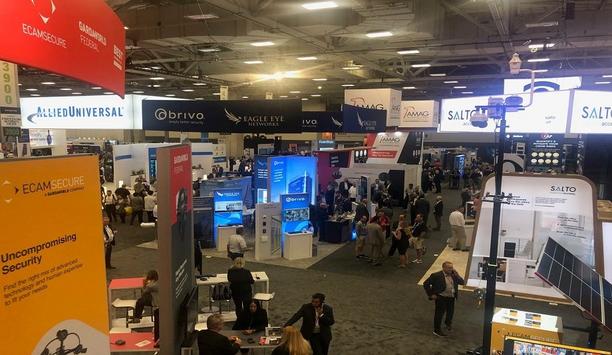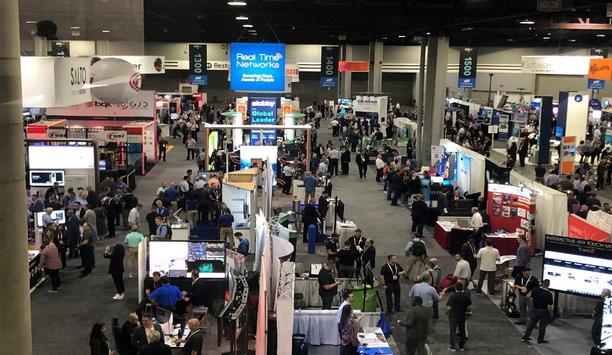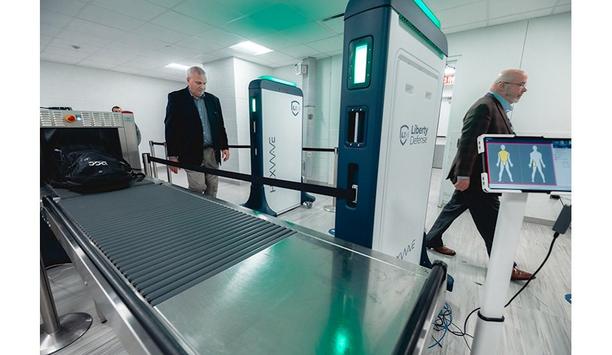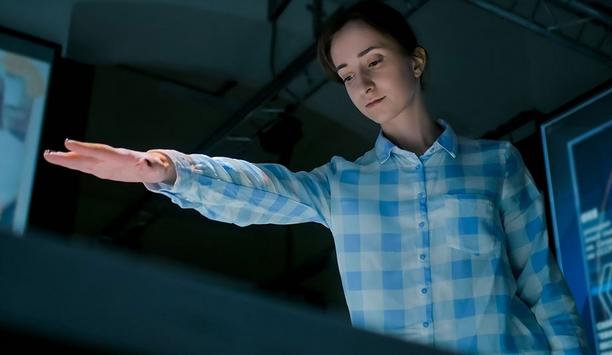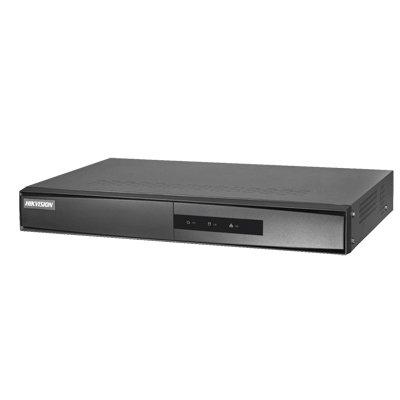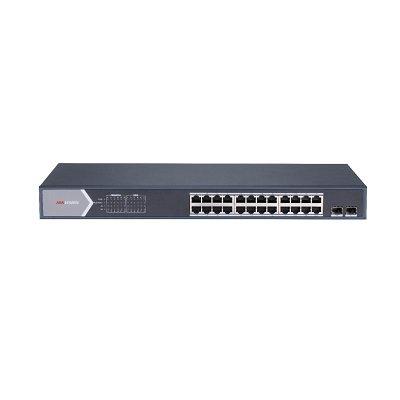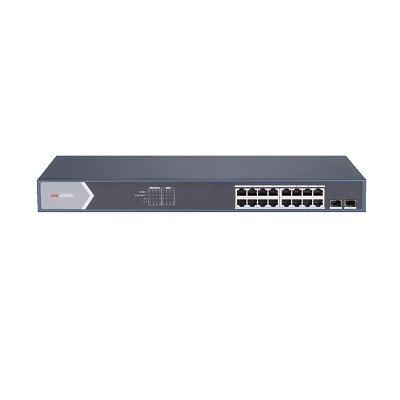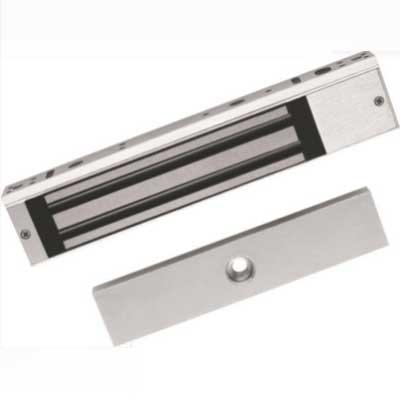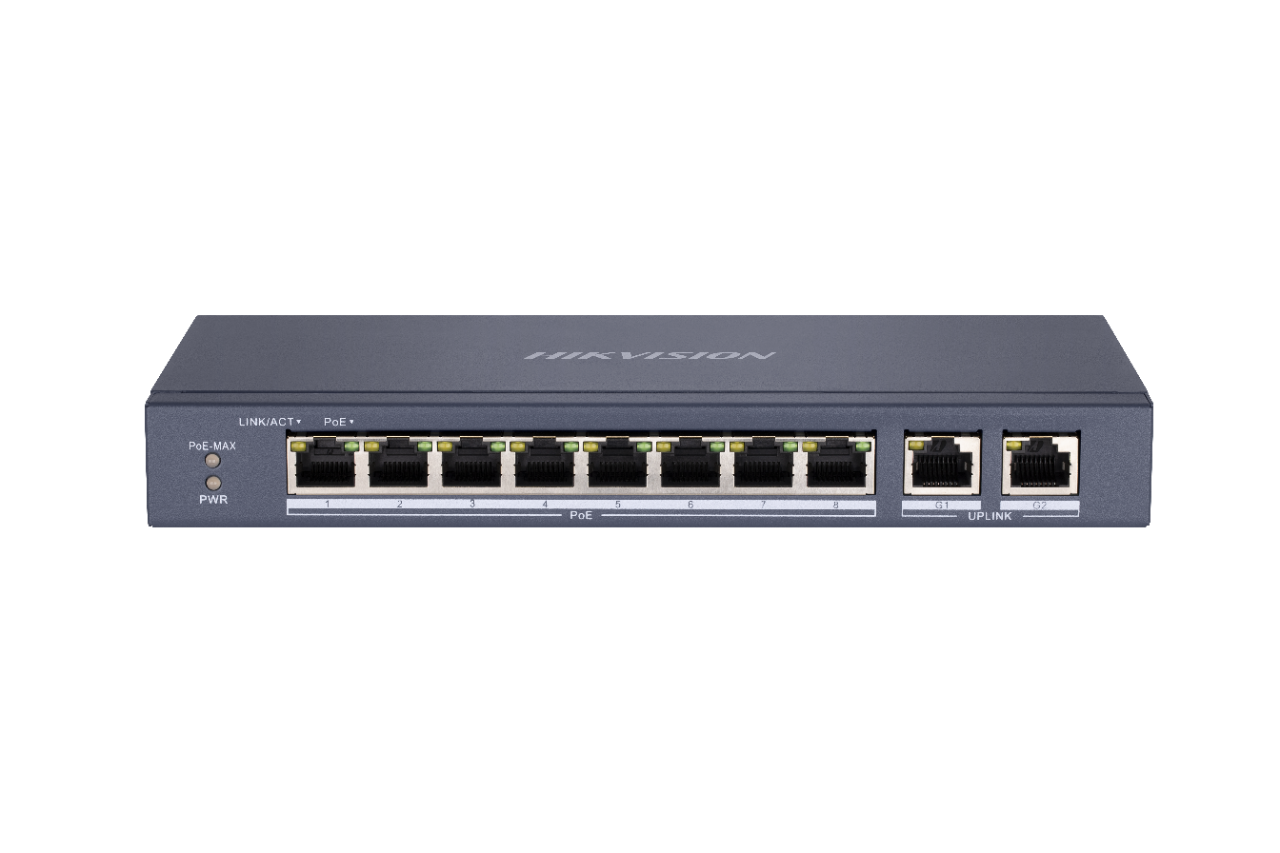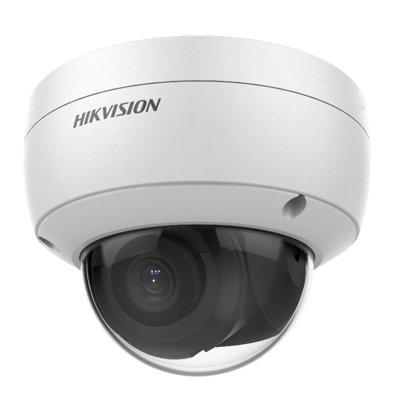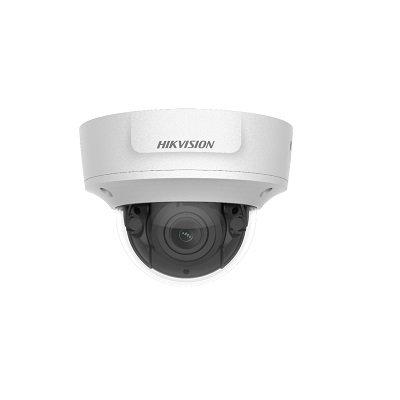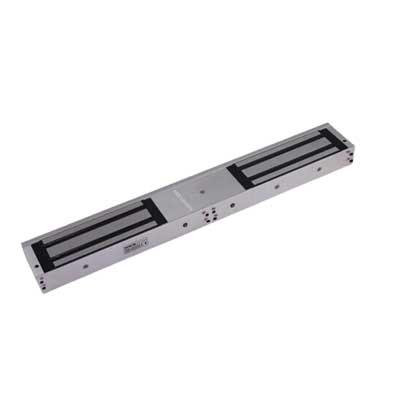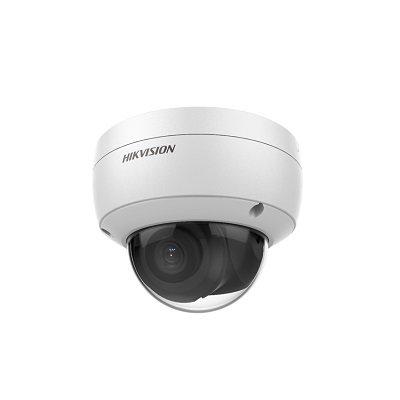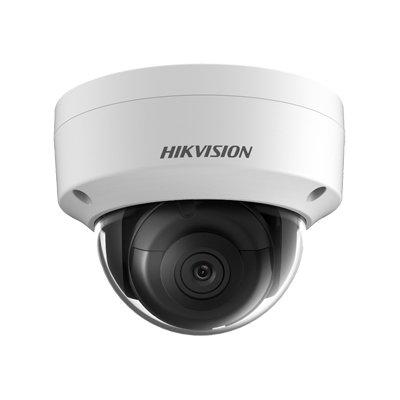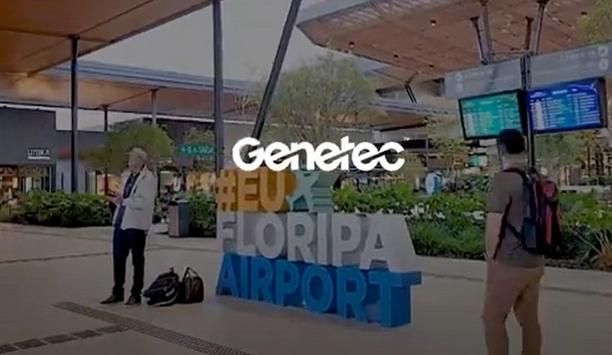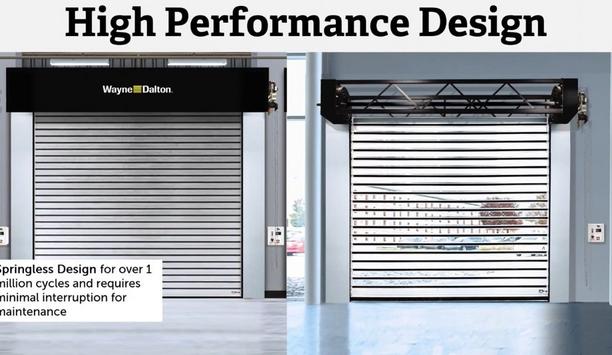Metal detectors
Power over Ethernet (PoE) network switches are frequently used to supply outdoor IP cameras with electricity. Powering IP cameras becomes a challenge, however, when only non-PoE legacy switches are available. Within solar trailers or NEMA-rated pole boxes, operators are left with few power options but connecting batteries or running long cables from wall outlets. Gigabit PoE injector Antaira is introducing at the ISC West its new INJ-C201G-at-24-T industrial Gigabit PoE injector T...
Morse Watchmans, the industry pioneer in key control and asset management systems, is highlighting its lineup of innovative key management solutions at booth 15109 at ISC West 2025. The company will feature its trusted Emergency Key Grab (EKG) Kit designed to enhance security and streamline crisis response across multiple sectors, including schools, hospitals, airports, public venues, government buildings, data centres, and other critical environments. Morse Watchmans growth strategy And...
Detection Technology, a pioneer in X‑ray detector solutions, announces the launch of a first‑of‑its‑kind X‑Panel 2520z FOM flat panel detector designed to elevate dental imaging. This trend‑setting 25 cm x 20 cm detector is the first on the market to feature advanced IGZO‑TFT technology at this size, delivering a significantly larger field of view (FOV) and enhanced image quality compared to traditional a‑Si panels. X-Panel 2520z FOM features The X-Panel 2520z FOM sets a new benchmark in dent...
Allegion plc, a global security products and solutions provider, through one of its subsidiaries, has recently acquired the business and operations of privately held Next Door Company, including its brands and other assets. Based in Miami, Florida, and founded in 1993, Next Door is a U.S. manufacturer of stainless steel and hollow metal doors, specialising in custom configurations for industrial, commercial and institutional buildings. Next Door complements Allegion’s existing hollow meta...
Gunnebo Entrance Control will be exhibiting its latest entrance control technologies at ISC West 2025 in Las Vegas, offering smart solutions designed to enhance safety, streamline entrance control, and support diverse operational needs. Visitors can find Gunnebo Entrance Control at Booth 28061, where an extensive range of entrance control innovations will be showcased. Advanced touchless technology Gunnebo Entrance Control’s portfolio also features high-security booths such as the motor...
Comelit-PAC has launched 7TOP, its most advanced IP door entry Monitor to date, designed to seamlessly blend smart technology, sleek aesthetics, and energy efficiency into the latest living and working environments. Compact and elegantly designed, 7TOP from the global security specialist is built to suit a wide range of installations while supporting effortless surface mounting with a secure metal bracket. 7TOP features 7TOP’s integrated Wi-Fi and Ethernet connectivity allow users to st...
News
dormakaba, a global pioneer in the access solutions market, and technology company Rohde & Schwarz are expanding their partnership from the airport business area to the critical infrastructure sector. Both partners have developed a new innovative solution for people screening that will be presented at the BAU 2025 trade fair in Munich. Automated access solution The automated access solution simplifies necessary security checks and increases capacity and efficiency. The global pilot projects to test the system have been expanded and are currently taking place in the USA, Singapore, and the Netherlands. Trial operations at Munich Airport are also expected to begin in January 2025. APS (Automated Personnel Screening) solution This APS is a new approach worldwide based on mature technologies, products, and solutions The APS (Automated Personnel Screening) solution originally developed for airports by dormakaba and Rohde & Schwarz will also be offered for use in other critical infrastructures such as power plants, research laboratories, and data centres after a test phase. This automated personnel screening is a new approach worldwide based on mature technologies, products, and solutions within the dormakaba and Rohde & Schwarz portfolios, and it is set to revolutionise access protection. Joint innovation for greater security The system combines security interlocks with AI technology for position guidance from dormakaba and a security scanner for people screening from Rohde & Schwarz. The Rohde & Schwarz millimeter wave scanner not only detects metallic objects but also, for example, ceramic knives or suspicious liquids and can thus counter modern threats such as 3D-printed weapons without metal parts. Manual intervention at the exit of the dormakaba security gate is only required if objects are detected. Efficiency and user-friendliness Till Reuter, CEO of dormakaba, says, “We are pleased to expand our technology partnership with Rohde & Schwarz to protect critical infrastructure. The automated access solution we have jointly developed meets the latest security standards and prioritises efficiency and user-friendliness." "With this pioneering innovation, we are creating new markets while also meeting the rapidly growing demand for people screening in the critical infrastructure sector.” Innovative and reliable systems Andreas Pauly, CTO of Rohde & Schwarz, adds, “We are pleased to be expanding our cooperation with dormakaba. Together with our partner, we offer an intelligent solution with state-of-the-art technology that addresses current threats and optimises the protection of critical infrastructure worldwide." "With decades of expertise in high-tech communication and security solutions, we are helping to provide innovative and reliable systems that meet the growing challenges of modern security standards.”
Moxa is extending the advantages of IP video surveillance to challenging transit applications with the debut of its new VPort 07-3, an EN 50155-compliant onboard dome camera. An ideal surveillance solution Hardened against service interruptions caused by heavy vibration, impact, or water ingress, the new camera is an ideal surveillance solution for light rail, buses, and passenger rail fleets. Built around a 3MP progressive-scan CMOS sensor, it captures sharp 2048 x 1536 pixel images at up to 20 frames-per-second, leveraging bandwidth-efficient H.265/H.264 and MJPEG compression to support multiple independent streams, while benefitting from Moxa's innovative DynaStream™ and CBR Pro™ network technologies. Around-the-clock surveillance VPort 07-3 easily manages scenarios where there are significant variations in light intensity As trains enter and exit passenger stations, underpasses, and tunnels, lighting can abruptly fluctuate from dark to light. Adding to these challenges, most rolling stock is in continuous operation both day and night. Regardless of lighting conditions, the VPort 07-3 assures forensic-quality imaging by adopting a powerful combination of Dynamic Noise Reduction (DNR), Wide Dynamic Range (WDR), and an advanced Auto White Balance (AWB) algorithm that resolves lighting challenges and reduces motion blur. Due to its 100dB WDR, the VPort 07-3 easily manages scenarios where there are significant variations in light intensity within the same frame, ensuring the smallest of details are visible in both bright and dark areas. Flexible design options Designs of trains and buses can vary greatly, and all surveillance projects have distinct specifications that need to be met. Versatile Moxa VPost 07-3 cameras are available in a variety of models featuring fixed-focal-length lenses from 2.4mm to 8.0mm, line-in or microphone audio interfaces, and different temperature ranges to help create custom solutions to fit the requirements of any project deployment. For maximum efficiency and minimal wiring costs, all models support PoE (802.3af) and 24VDC power inputs. ONVIF conformity assures interoperability with third-party devices and software. Industrial-grade cameras Moxa VPort 07-3 cameras are compliant with mandatory sections of the EN 50155 Railway Certification and the EN 62262 IK8 vandal-resistant rating. To meet these standards, the cameras have been rigorously tested and approved for rolling stock installation and railway deployments. This includes being certified to withstand temperature ranges from -40° to 70°C, damaging EMI/surges, vibration, and other environmental pressures common on rolling stock. Advantages Moxa VPort 07-3 cameras feature an IP-66-rated metal housing, a PC dome cover with a built-in heater Moxa VPort 07-3 cameras also feature an IP-66 rated metal housing, a PC dome cover with built-in heater and demister, plus a weatherproof M12 Ethernet port providing reliable connectivity where a standard RJ45 connector would fail. In addition, there is 8GB of onboard storage to ensure continuous video recording even if recorder connectivity is lost due to a power outage. All these advantages make the cameras an outstanding choice for mission-critical mobile surveillance. Bandwidth preservation Because preserving network bandwidth is a pivotal issue in IP deployments, Moxa VPort 07-3 cameras incorporate the company's patented DynaStream™ function, which automatically changes the video frame rate to control network bandwidth budget and ease system management. Another function, Moxa's CBR Pro™, guarantees no packet loss in limited bandwidth transmissions, ensuring that images will not exhibit the mosaic effect. Advanced network security functions prevent unauthorised access or data hijacking of surveillance video.
Athena Security Weapons Detection System, a global provider of advanced, AI-enabled security solutions, has launched its newly created 'Workforce Multiplier' weapons detection system with integrated AI X-ray scanning technology (patent pending). Together, Athena’s AI-powered weapons detection and AI X-ray provide unparalleled accuracy and efficiency in identifying potential threats. The new AI X-ray scanning technology fully integrates into Athena’s WDS system and requires only one operator to manage both platforms. Workforce Multiplier AI software "Our new integrated Workforce Multiplier AI software marks a significant step forward in our mission to help save lives," states Lisa Falzone, Co-Founder and President of Athena Security. Lisa Falzone adds, "By combining our proven weapons detection system software with advanced AI X-ray technology, we are empowering organisations to proactively identify and mitigate potential threats to help ensure the safety of their employees, customers, and visitors." AI X-ray scanner The AI X-ray scanner automatically and precisely identifies guns and knives within bags Only one operator is needed to operate the integrated system in a low-volume environment, significantly streamlining security procedures and maximising staff resources for organisations of all sizes. Alerts from both the Athena weapons detection system and the AI X-ray scanner are displayed on the operator's tablet, providing a comprehensive view of potential threats. The AI X-ray scanner automatically and precisely identify guns and knives within bags–significantly reducing false alarms and minimising the risk of human error. AI X-ray/WDS integration Chris Ciabarra, the Co-Founder and CTO of Athena Security, says the team has been diligently working on developing the AI X-ray/WDS integration because they knew it would help solve a big pain point for clients as AI ray can differentiate between laptop and weapons faster and with fewer mistakes. "Many organisations need both a weapons detection system and an X-ray machine," says Chris Ciabarra, adding "The problem is the systems are separate and it takes at least one dedicated personnel to remain stationary with their eyes fixed on the X-Ray screen." Real-time alert notifications Alerts from both systems are delivered to one console, and organisations need only one operator Chris Ciabarra continues, "We call our system the 'Workforce Multiplier' because it’s the extra pair of eyes that frees up security personnel so they can focus on other critical security measures." With the integration of AI-X-ray, threats are identified and instantly labeled. Inorganic materials are colourised, and security officers are notified of threats in real time. Alerts from both systems are delivered to one console, and organisations need only one operator to run the integrated platform. Key benefits of the integrated system Enhanced Accuracy and Labeling: AI X-ray scanning ensures AI identification and labeling of weapons, minimising false positives and negatives. The system also grows smarter over time. Increased Efficiency: One combined console for both systems enables single-operator capabilities, which optimises staffing resources. Space-Saving: The AI X-ray is almost half the size of a traditional X-ray machine machine, thereby requiring less physical space at entrances. Improved Situational Awareness: Consolidated alerts on the operator's tablet provide a comprehensive overview of potential threats. Workforce Multiplier: Organisations essentially recoup the time of one security officer. With weapons detection and identification fully automated, security personnel are freed up to focus on other critical security measures. Visitor management platform Athena Security's new Workforce Multiplier integrated AI X-ray and concealed weapons detection system is available for deployment in a variety of settings, including schools, hospitals, businesses, data centers, government buildings, and public spaces. The new system is also fully integrated with Athena’s advanced visitor management platform–enabling organisations to know who and what is entering.
Brady Corporation offers a new, more cost-efficient solution to quickly detect unstable Li-ion batteries in storage. Able to automatically measure 0,5°C temperature differences per second, the solution provides the accuracy and speed needed to isolate unstable batteries before they become a safety risk. Brady’s new battery temperature monitoring solution involves three components: self-adhesive battery-free UHF RFID labels with embedded temperature sensors, RFID readers with up to 16 antennas, and a customisable RFID software platform. RFID software platform RFID antennas and readers automatically power all labels and sensors in range to pile temperature readings The self-adhesive UHF RFID-embedded labels can be applied inside battery cell boxes for fast temperature change detection. Alternatively, every battery cell can be labelled with Brady’s on-metal, printable UHF RFID labels to enable more elaborate advantages in Li-ion battery supply chains. Every second, the RFID antennas and readers automatically power all labels and sensors in range to collect temperature readings with 0.5°C accuracy. Every temperature reading, and matching battery storage location, is collected by the RFID software platform. When customisable temperature thresholds are reached, the software platform triggers third-party devices via standard API. Brady’s software platform API With almost continuous, automated and accurate temperature monitoring, warehouse stakeholders can receive early warnings via sms, email or even racking warning lights. They can be guided in time to specific warehouse locations for unstable Li-ion battery isolation. Alternatively, Brady’s software platform API can also trigger an autonomous vehicle to automatically remove an unstable battery. RFID tags or IR cameras Battery-free UHF RFID labels with embedded sensors are a more cost-effective battery temperature monitoring solution than powered RFID tags or IR cameras. UHF RFID labels and their temperature sensors receive power wirelessly from RFID antennas and readers in range. They are available at significantly lower costs - up to five times less than battery-powered RFID tags-and do not require maintenance. Temperature monitoring solution Brady connects up to 16 antennas to a single RFID reader that provides high accuracy and high-speed The number of RFID readers needed to completely cover storage locations in a warehouse heavily depends on warehouse setup, racking height and storage volume per racking compartment. Brady can connect up to 16 antennas to a single RFID reader that provides high accuracy, high-speed temperature monitoring for all storage locations in 12-metre-wide and 4-metre high racking. The automated, and almost continuous, nature of the temperature monitoring solution enables Li-ion battery manufacturers and logistics companies to significantly increase safety and reduce risk at advantageous costs. Brady’s RFID readers By adding an RFID reader gate at designated warehouse exits, Brady’s solution can also enable automated, real-time warehouse inventories. RFID labelled items are read by Brady’s RFID readers the moment their label enters reader range. When they pass through a designated RFID reader gate, these items can easily be subtracted from the inventory by the RFID software platform. When used in this way, the solution can provide cost-effective battery track & trace inside the warehouse from entry to exit, complete with battery cell box or battery cell temperature fluctuation in between.
Smiths Detection, a pioneer in threat detection and security screening technologies, and a business of Smiths Group, announces that its state-of-the-art IONSCAN 600 detectors will be tested by the Polish railway, PKP Group. The six-month pilot, the first in Poland, will help develop standards for future anti-terrorism and anti-sabotage systems, strengthening the protection of critical infrastructure. The equipment was loaned by the Directorate General for Home Affairs and Migration (DG HOME) of the European Commission, which initiated the project. Develop security practices The IONSCAN 600 detectors will be used to assess and develop security practices for the railway system, with a particular focus on strengthening anti-terrorism and anti-sabotage measures. These detectors, which use scanning strips to identify explosives and hazardous substances, will be used in random screenings of baggage and cargo at selected train stations, on trains, and at cargo terminals. The goal is to implement security protocols similar to those already in place at airports, ensuring comprehensive protection of critical infrastructure. Workshop held at Warszawa Central station Live demonstrations of the IONSCAN 600’s capabilities took place at key locations To kick off the initiative, a workshop was held at Warszawa Central station, attended by representatives from the European Commission, Smiths Detection, the Polish Police, Border Guard, Railway Security Services, and PKP Group. Live demonstrations of the IONSCAN 600’s capabilities took place at key locations, including PKP Intercity trains and the PKP CARGO Connect terminal, showcasing the effectiveness of the detectors in real-world scenarios. Shaping future security standards The European Commission and Smiths Detection will use the test to provide valuable insights to refine operational requirements for the use of these devices in the railway environment. The results will contribute to the Commission's efforts to establish standardised security protocols for railway systems across Europe. These findings will also help define the future development of anti-terrorism and anti-sabotage technologies tailored for the rail sector. Poland becomes the sixth country to test this technology as part of the EU’s wider railway security initiative, following similar trials in the Netherlands, Belgium, Germany, Slovakia, and Romania. The operational feedback from these tests will be instrumental in shaping future security practices and devices for the rail industry. Enhancing border security In addition to its railway testing, the IONSCAN 600 detectors will also be deployed by the Polish Border Guard at key border crossings with Ukraine and Belarus. These devices are capable of detecting both explosives and dangerous chemical substances and can identify whether an individual has come into contact with these materials or with weapons. This capability is particularly important in securing the EU’s external borders. Identifying security threats This initiative aims to expand the use of advanced threat detection technologies beyond aviation The IONSCAN 600 testing in Poland is part of the European Commission’s broader Counter-Terrorism Plan (CT Agenda), launched in 2020 to strengthen the security of public infrastructure across the EU. This project is part of a series of ongoing detection trials aimed at developing balanced security solutions in collaboration with manufacturers, operators, and law enforcement, addressing both facilitation and security concerns. This initiative aims to expand the use of advanced threat detection technologies beyond aviation, with a focus on harmonising standards for the protection of public spaces. The programme also supports the voluntary adoption of EU-wide standards for detection equipment, ensuring that technologies like the IONSCAN 600 are effective at identifying security threats while enabling the free movement of people and goods. Rail safety standards Matthew Clark, VP Commercial, Smiths Detection, said of this initiative: "This pilot programme is a vital step toward enhancing rail safety standards, which are essential in today’s evolving threat landscape. By testing the IONSCAN 600 in real-world rail environments, we’re not only expanding the applications of our technology beyond aviation, but also helping shape the future of security for critical infrastructure across Europe." He adds, "Our commitment is to provide reliable, cutting-edge solutions that safeguard public spaces, and this project is a testament to that vision." European Commission’s Counter-Terrorism Plan The European Commission’s Counter-Terrorism Plan is part of an ongoing effort to bolster the EU's overall security posture. In 2019, the EU Railway Safety Platform adopted a set of best practices for rail safety, including the use of mobile detection devices for random and targeted checks. These initiatives are designed to address emerging threats and create a more secure and resilient Europe.
ZeroEyes, the creators of the only AI-based gun detection video analytics platform that holds the full U.S. Department of Homeland Security SAFETY Act Designation, announced that its Gun Violence Research Centre has released its Holiday Gun Incidents in Retail Facilities Report, identifying a disturbing trend involving gun-related violence in US retail locations. The research shows that, during the 2022 and 2023 holiday seasons, from Black Friday to New Year’s Eve, retail settings including malls, grocery stores, convenience stores, and gas stations experienced a large spike in gun-related incidents, with an average of five per day, resulting in significant injuries and fatalities. Gun Violence Research Centre The Gun Violence Research Centre is a resource on gun violence in the United States of America, including active shooter and mass shooting incidents, spontaneous and targeted gun violence, as well as threats, hoaxes, and swatting. Its new findings reveal that the gun-related incidents recorded over the 2022 and 2023 holiday seasons resulted in 83 fatalities and 140 injuries. Gun-related incidents 64% of incidents took place outside of retail facilities, in parking lots and entryways Incidents ranged from dispute escalations - by far the most common cause, making up nearly 40% of cases - to robberies and drive-by shootings. Notably, 64% of incidents took place outside of retail facilities, in parking lots and entryways, and almost 55% of shooters fled the scene and were never apprehended. Financial impact Gun violence in retail settings carries long-lasting economic and social impacts beyond the immediate physical dangers. While the primary focus is correctly centered on preventing violence and saving lives, these tragic events also have a significant financial impact on businesses. Retailers face property damage, reduced foot traffic, and increased employee turnover as both customers and staff feel unsafe. ROI model The financial strain can even force permanent closures, impacting entire communities The ZeroEyes Research Centre, in collaboration with analyst firm Gartner, has developed an ROI model that quantifies these effects, which include higher insurance premiums and potential legal costs. In severe cases, the financial strain can even force permanent closures, impacting entire communities and deterring new businesses from entering affected areas. Enhancing security measures “The rising rate of gun-related incidents in shopping areas and retail facilities is an alarming trend that requires immediate action,” said Mike Lahiff, CEO and Co-Founder of ZeroEyes. He adds, “Retailers and law enforcement must collaborate to enhance security measures, especially during this peak shopping period when crowds increase and safety concerns are amplified.”


Expert commentary
If you were to ask people outside our industry what door and access security entails, chances are their answers would reflect their common encounters with locks, security guards, cameras, and maybe metal detectors, badges, or automatic doors. But if they were curious enough, they’d probably be astounded to learn how extensive, intricate, and interesting the business can be and, of course, how vital it is to life safety, physical security, and cybersecurity. Integrated, interoperable solutions They’d also discover that it’s not just about levers, deadbolts, and other products. Instead, it’s a system of many systems, integrated, interoperable security solutions that cover everything from access control, video surveillance, fire alarms, and communications to server rooms, IT networks, energy efficiency, and more. Partnerships to keep up with changing needs A manufacturer’s support of their customers is how prepared they are to respond with high-quality advice Integral to the future success of the openings solutions industry is how well manufacturers and security experts keep up with the changing threat landscape and their customers’ evolving needs. Part of a manufacturer’s support of their customers is how prepared they are to respond with high-quality advice, service, and innovations that address the questions and concerns that arise. That’s why more developers, designers, and end-users alike are leaning on partnerships with visionary manufacturing companies and systems integrators who proactively keep their ear to the ground and an eye on the future. Caution: curves ahead As we look toward that future here in North America, there will always be forces of change to contend with and the accompanying impact on people’s safety, security, health, and livelihoods that our industry will need to address. The forces range from the incessantly unfolding threat scenarios in our country and the world’s geo-political dynamics to climate change and a host of other shifting factors, including the ways we want to work post-pandemic. Bypassing tailored approach Commoditisation poses risks to customised systems integration, good design, the environment Like many industries, ours has seen a change in the level of commoditisation in recent years. While this may give some customers access to cheaper door products in the short term, it usually means bypassing a tailored and more effective approach to security solutions that better meet risk assessment needs for the long haul. It can also get in the way of fulfilling a customer’s forward-thinking requirements for sustainable and aesthetic building materials. In other words, commoditisation, with its tendency toward “sameness” and dependency on less sustainable, corner-cutting materials and processes, poses risks to customised systems integration, good design, the environment, and potentially security itself. Change for the better Fortunately, change has its upside, especially as it applies to innovation, the counterforce to commoditisation. It’s the primary reason why progressive architects, integrators, and security professionals in North America keep gravitating to manufacturers with the instincts and resources to make bold investments in people, new ideas, and processes that produce advanced, planet-friendly solutions. From our view of the door security industry, sustainability will be a central component of innovation from here on out, where the development of new solutions and products is guided by practices and values that reduce their environmental footprint and increase their positive impact. Sustainably-made solutions Transparency in the form of documentation and third-party certifications to back up sustainability claims Along with being a top-down priority for certain manufacturers, sustainably made solutions and products are in higher demand than ever from the design, building, security, and end-user communities. They want to know about the carbon footprint and health impact of product ingredients, their recyclability, and how responsibly things are being made, packaged, and delivered. And they expect transparency in the form of documentation and third-party certifications to back up sustainability claims. Resilience Along with sustainability, a greater focus on resilience has emerged. Climate change is being looked at as a key contributor to the increase in wildfires and the intensity of windstorms and flooding. There will continue to be an expanding need moving forward for FEMA-rated storm shelters, fire- and water-resistive doors, and even blast-resistant openings for certain locations. On the near horizon Facial recognition has long been in use in government and other high-security applications The door security industry is also seeing a fusion of technologies, including newer touchless/contactless opening solutions that incorporate improved biometric access credentials like facial recognition. Facial recognition has long been in use in government and other high-security applications, and we’re starting to see more adoption and willingness to use advanced biometrics devices for door access. Video sensing data and analytics Fortunately, there are new strides regarding the transparency of the algorithms relating to facial recognition. Reassurances about the prevention of bias will help further that adoption. Voice and video will also soon become more prevalent for building and security management by using video sensing data and analytics to inform door security solutions. These developments often stem from the convergence of application engineering and systems integration. Application engineering It also advances the de-commoditisation of security and access control solutions Openings solutions innovators and manufacturers receive vital feedback and insight from both channel partners and customers about the characteristics of a vertical market and/or region. Not only does this partnership require trust and close working relationships, but it yields near and longer-term advantages to all participants. It also advances the de-commoditisation of security and access control solutions. Serving underserved communities Smaller businesses need to manage the security and safety of their personnel and assets just as larger operations do. The challenge has been how to offer the right fit of robust door security solutions that also fit these organisations’ budgets. Historically, they’ve been caught between having to choose an enterprise system that would provide the security they need but comes with a high price tag or settling for mechanical locking doors and a fire alarm system that will at least satisfy a certificate of occupancy requirement. Smart lock system Many small business owners want technology that’s simple to install, even DIY in some cases Many small business owners would like to add a smart lock system to enhance their company’s security which also gives them the flexibility to issue mobile credentials and manage employee and visitor access remotely. Ultimately, they’re looking for a higher level of functionality than what’s available at the low end but something with far less infrastructure and at a lower cost than what’s inherent with higher-end solutions. They also want technology that’s simple to install, even DIY in some cases. Scalable electronic access control Supporting these underserved customers requires developing scaled solutions to match the fewer doors, employees, and amount of space that smaller businesses need. This unique approach to electronic access control is new, but it’s already proving to be successful in helping organisations better manage their time, resources, and security. Training The need for expanded solutions awareness, product knowledge, and installation training is also growing The need for expanded solutions awareness, product knowledge, and installation training is also growing. Retirements and other changes within the locksmithing, systems integration, and facilities management sectors continue to affect how our industry needs to recruit, develop, and retain talent. So do technological advancements in electronic access control and door security hardware overall. Change, innovation, and learning A manufacturer or organisation that can offer comprehensive training led by seasoned professionals will go a long way toward expediting the onboarding of new hires and providing continuing education for experienced professionals at all levels and from all disciplines connected to safety and security. Ultimately, door security experts and companies who embrace change, innovation, and learning will gain the extra edge customers are always looking for to add value to their investments in security.
The UK’s future depends on our children. Within the four walls of classrooms around the country, young minds are inspired, practical skills are learnt, and new passions are established; these will be tapped into by pupils for decades to come. To make sure outmoded security measures are not having an adverse effect on the performance within, we must first examine the limits and physical safeguards around these educational institutions. When planning and building any facility for the education sector, security should be given high consideration from the beginning. Following the COVID pandemic, the attendance of pupils is estimated to be 80.8% in 2022, which is still low. Are parents reluctant to send their kids to school due to safety worries perhaps? With around 8.5 million children attending schools every day in the UK, parents must be able to put their children's safety and security in the hands of the school's head teacher and staff. Children's safety and security When planning renovations or the construction of a new school, it's crucial to take the school fence, entrance gates, and access control into account. A perimeter should either stand out on its own or fit in with the surroundings while providing an acceptable and realistic level of physical security against any potential threats. When planning renovations or the construction of a new school, it's crucial to take the school fence For a special report titled ‘Protecting the Future,’ we commissioned research for which we polled 75 architects, 280 teachers (including around 50 heads), and 1,000 parents (a nationally representative sample) on numerous security-related themes. Our research shows that three out of ten teachers still believe that the school grounds are not secure enough. Design security solutions In 28% of schools, our research shows that criminal damage is a problem. Along with burglary, vandalism, arson, and anti-social behaviour, there are numerous other hazards. Criminals often target schools because they contain valuable resources. Other risks include excessive traffic or the chance that students will unintentionally use the fencing as a climbing frame. Any security plan for a school should start with a risk analysis. As every school site is different, facilities managers must design security solutions for schools on an individual basis. These findings prompted us to create our list of the top five factors to consider when evaluating the security of an educational site. Residential area risks: entrance points According to 56% of teachers, there are many entrances at their institution Access control is a crucial component of any school's security plan. According to 56% of teachers, there are many entrances at their institution. Access points should be strictly controlled, and there should be one central entry that is visible from the reception area or school office. Make sure to include a pedestrian gate near any car entry points for safety. If you do have extra gates, it is a good idea to only allow people to use them during peak hours. You may, for instance, designate a one-way path through the property. Make sure to post signage directing them to the main door and displaying the operating hours. The local surroundings It is essential to look closely at the surrounding environment in order to spot risks and potential problems. For instance, can fences, gates, and other barriers be successfully supported by the foundations? It is essential to look closely at the surrounding environment in order to spot risks and potential problems Are there any obstacles that should be avoided, such as hanging branches from trees on the boundary, storage containers or cars that can be used as climbing aids? Consider how security measures can influence the neighbourhood residents if your school is situated in a residential area. Acoustic fencing can provide security and seclusion in addition to reducing noise entering and leaving the school grounds. A softer look It can be challenging for any institution to strike the correct balance between allowing students and visitors in while also keeping out potential trespassers. Innovative colour use can soften the appearance of a perimeter and improve the school's image. Metal railings may be advantageous for some schools, but nurseries and primary schools may benefit more from timber fencing, which still offers security and protection but has a ‘friendlier’ aspect and greater seclusion. Designated pathways and times Sixth Form students are frequently allowed to leave the campus during lunch or free study periods At the busiest times of the day, many schools deal with considerable pedestrian and vehicular traffic. To maintain safety during these busy times, consider designing distinct designated pathways for cars and pedestrians, and spend time devising a plan for site security during off-peak hours. Are there any maintenance or delivery trucks entering the school grounds, for instance? While younger students may be picked up by parents at the halfway point of the school day in primary schools, Sixth Form students are frequently allowed to leave the campus during lunch or free study periods in secondary schools. Range of security options For schools with any level of risk, there are fencing and gates available in both wood and steel. Even if a slatted design is ideal, panels should be placed vertically to make them difficult to climb. The resistance of fences against climbing is increased by welded mesh designs with smaller gaps between the horizontal and vertical wires. A fence must have a minimum height of 1.8 metres overall and be able to maintain that height over irregular terrain without gaps. The resistance of fences against climbing is increased by welded mesh designs with smaller gaps Consider installing LPS 1175-certified fencing that is at least 1.8 metres high for schools that are in high-crime regions. The Loss Prevention Certification Board's (LPCB) security ratings, which are only awarded to products after extensive independent testing, demonstrate the resistance perimeter fencing systems may offer against several assault tools. Best learning environment Additionally, learning and health are significantly impacted by noise pollution. Only 30% of specifiers have used acoustic solutions for schools, making it a common oversight during the design process for schools. The World Health Organization (WHO) recommends less than 35 dB of noise in classrooms for the best conditions for instruction and learning. But the EU estimates that more than 100 million people in Europe typically face noise levels above 55 dB. Acoustic barriers are one solution that can help create a quiet setting for the best learning environment, thus headteachers need to make acoustics a priority when consulting architects and specifiers. There are several choices, including earth bunds or berms, steel and aluminium barriers, and wooden acoustic barriers. Among security experts No matter how high the quality of the fence, if a tree or other item that may be climbed is nearby Although there isn't a single solution for all of the security issues that schools confront today, architects can help head teachers secure and welcome their children. No matter how high the quality of the fence, if a tree or other item that may be climbed is nearby, getting in becomes a simple process. Therefore, to examine any security measures that are being constructed or maintained at a school, specialists, architects, and contractors should all be invited to collaborate and advise school administrators. The significance of well-planned, protected, and designed schools for the safety of our children cannot be overstated. The design process requires careful consideration and adequate time. There is no doubt that enhanced communication and the sharing of specialised knowledge among security experts, designers, and teachers may dramatically increase the safety of our schools.
Residential burglaries and break-ins are a problem for many homeowners. The FBI estimates there were approximately 1,117,696 burglaries in 2019 in the United States, which accounted for 16.1% of property crimes. Having proper home security can not only protect your home and belongings, but it can also keep your family safe. Even if you’re new to the idea of having and using smart home security devices, it’s easy to get started. This guide will provide the information and actionable tips you need to get started with your home security system. Why do I need a home security system? When you have a home security system, you’re able to detect a possible intrusion into your home, even when you’re not there. This detection system may help protect you, your family, and your property from various crimes, including home invasions. Property crime and theft cost Americans billions of dollars each year. Installing and using a home security system can prevent you from becoming a victim. Some homeowner insurance companies also offer customers a discount for installing a security system. Not only will you feel safer and more protected, but you could also save money in the long run. Multi-layered security system New smart security technology makes it easier than ever to monitor your home from almost anywhere Having the right home security keeps you safe, and it’ll also cause criminals to think twice before entering your home. Using the right equipment can prevent these crimes from happening to you in the first place. It’s vital to ensure that you’re using multi-layered security, including alarms, intrusion detection, cameras, and more. New smart security technology makes it easier than ever to monitor your home from almost anywhere in the world. The more barriers you can put in place between your home and potential criminals, the safer you and your family will be. Important equipment for installing a home security system Every home security system needs some fundamental pieces of equipment in order to be effective. Here are the most important items you’ll need to get started: Intrusion detection: This equipment includes the main security panel that allows you to control the system. It can be called the keypad, control panel, or security hub. The panel allows you to make changes or arm and disarm the system as needed. Door and window sensors alert you when someone tries to enter your home, as well as motion sensors that detect any unusual movement. Glass break sensors are another great piece of equipment, they recognise breaking glass, which signals the alarm if someone tries to break a window. Lighting: Even something as simple as bright exterior lighting can keep your home safer. Consider upgrading your outdoor lighting to motion-sensing lights that turn on whenever they detect movement. Add this lighting to the corners of your home, near the garage, and at the front and back doors. Cameras: Security cameras record activity in and around your home. Choose a PTZ or pan-tilt-zoom camera so you can move the camera, zoom in, and adjust it remotely for better footage. Use cameras that store the footage just in case you need to view it or show it to the police later. Some cameras include built-in memory cards, while others require payment for storage on a cloud network. A camera doorbell is another great way to keep you safe. It alerts you and records video when someone approaches your home. Monitoring: If you travel or you’re away from home frequently, enrolling in home security monitoring is a great way to protect your property. It requires a monthly fee, but this service connects to your system and keeps a watchful eye over your home when you’re not there. The authorities and you will be immediately alerted if an alarm goes off or fire is detected. This is a great way to get peace of mind whenever you’re not at home. If you’re unfamiliar with how to install any of your new pieces of security equipment, a professional installer can help. They have the skills and experience required to ensure that every piece of equipment is correctly installed and connected for the best coverage to keep you safe. Secure your Wi-Fi network with strong passwords The longer and more complex your password is, the less likely your network will be hacked by nefarious outsiders Once you have your new smart home security system installed, you’ll need to protect it from hackers. Most Wi-Fi routers aren’t immediately secure upon installation until you change the password. Make sure you’re using a strong password containing a unique mixture of letters, numbers, and symbols. Integrating capital letters will also make it more difficult for hackers to access them. The longer and more complex your password is, the less likely your network will be hacked by nefarious outsiders. It’s also crucial to ensure that your Wi-Fi network and equipment come from a trusted, reputable manufacturer with a long history of providing security to its customers. You should also double-check to see how the manufacturer uses the information it collects and if it’s being given to third parties for marketing or other purposes. Enable multi-factor authentication The term multi-factor authentication refers to the several pieces of information required from a user to access an account. This access method is put in place to protect yourself from possible breaches and verify your identity. This option is usually available with the majority of newer smart home security systems and collects more than just a password. Using multi-factor authentication may require you to scan your fingerprint or retina to ensure it’s really you trying to access the system. It may also ask for things like a numeric passcode or have you answer a security question. If this option is available to you, it’s highly recommended that you set it up. This simple additional step will help to prevent cybercriminals from trying to use your user credentials and access your profile. It’s also a great way to protect yourself from potential data breaches. Regularly update your devices Set a reminder to check the manufacturer’s website every month or so to confirm there are new updates ready Just like your smartphone or computer, your smart home security devices should be updated regularly. These new updates provide improvements to the usability of your equipment, better protection against hackers, and new hardware updates that help the equipment run smoother. Some devices will alert you when an update is available, and others won’t. Set a reminder to check the manufacturer’s website every month or so to confirm there are new updates ready. You should also pair your mobile app to your security devices and adjust the settings to turn on automatic software updates so you never miss anything. This is the best way to ensure you have all of the latest hardware upgrades and security patches. Keeping the home and family safe Use these important tips if you’re just beginning the process of installing a home security system. With the right equipment and proper protections in place, you can keep your home and family safe. Remember to install the most essential equipment, use unique passwords, and take steps to ensure that your new software and equipment are as secure as possible for peace of mind.
Security beat
Companies at GSX 2023 emphasised new ways that technologies such as artificial intelligence (AI) and the cloud can address long-standing issues in the security market. Among the exhibitors at the event in Dallas were companies seeking creative ways to apply technology, lower costs, and make the world a safer place. Reflecting on the exhibition, here are some additional takeaways. Expanding AI at the edge i-PRO is a company reflecting the continued expansion of edge AI capability in the security market. Today, more than half of the company’s lineup supports AI at the edge so the customer has a wide choice of form factors when seeking to leverage the feature set. AI processing relay, extended warranty i-PRO is increasing their warranty period from 5 to 7 years, which could be a lifetime warranty in some cases I-PRO also has an “AI processing relay” device that accepts non-AI video streams and applies edge analytics. AI has progressed from a high-end technology to a feature available in a variety of cameras at different price points. i-PRO is also increasing its warranty period from 5 to 7 years, which could be a lifetime warranty in some cases depending on a customer’s refresh schedule and lifecycle management. Active Guard, MonitorCast The company’s video management system (Video Insight) is continuing to build new features including “Active Guard,” an integrated metadata sorter. Their access control platform, MonitorCast, is a Mercury-based solution that is tightly integrated with Video Insight. Their embedded recorders now have PoE built in. “We can move at a faster pace to fill out our product line since leaving Panasonic,” says Adam Lowenstein, Director of Product Management. “We can focus our business on adapting to the market.” Emphasis on retail and other verticals Shoplifting is a timely issue, and retail is a vertical market that got a lot of attention at GSX 2023. “We see a lot of retailers who are primarily interested in protecting employee safety, but also assets,” says Brandon Davito, Verkada’s SVP of Product and Operations. “Shrinkage is a CEO-level priority.” “Retailers are getting more engaged with security posture, instead of letting perpetrators walk,” Davito adds. Intrusion detection Verkada has an intrusion product that will notify a central station if there is an alarm On the alarm side, Verkada has an intrusion product that will notify a central station if there is an alarm, and operators can review videos to confirm the alarm. Other capabilities seeking to discourage trespassers include sirens, strobes, and “talkdown” capabilities. International expansion Verkada continues to expand internationally with 16 offices in all, including Sydney, Tokyo, and London. The core value proposition is to enable customers to manage their onsite infrastructure more simply, including new elements such as PTZ cameras, intercoms, and visitor management. Verkada emphasises ease of use, including a mobile application to allow access to be managed across the user base. Forging partnerships “We are committed to the channel and industry, and we continue to build relationships and expand our reach,” says Davito. Among the industry relationships is a new partnership with Convergint, which was hinted at during the show and announced later the same day. They are also expanding their partnerships with Schlage, Allegion, and ASSA ABLOY. Working with other verticals They offer new features for K -12 schools, and a new alarm platform is easier to deploy and manage Verkada has also found success across multiple other verticals, notably healthcare, where they integrate with an electronic medical records system. They offer new features for K-12 schools, and a new alarm platform is easier to deploy and manage. They are integrating wireless locks to secure interior doors in schools, looking to secure the perimeter, and installing guest management systems. Transitioning the mid-market to the cloud Salient is squarely focused on the “mid-market,” a large swath of systems somewhere between small businesses and enterprise-level systems. Pure cloud systems are not as attractive to this market, which has a built-out infrastructure of on-premise systems. Adding a camera to an existing system is easier and less expensive than tying it to the cloud. Benefits of cloud It’s a market that may not be ready for the pure cloud, but there are benefits to be realised from adding a cloud element to existing systems. “We are continuing to augment our premise-based solutions with added cloud capabilities and flexibility,” says Sanjay Challa, Salient’s Chief Product Officer. The feedback Salient hears from their customers is “I want to own my data.” The hybrid cloud approach offers the right mix of control, flexibility, and unit economics. Cloud add-on capabilities We want to provide the flexibility for customers to go full-cloud as it becomes more economically attractive" Cloud add-on capabilities include bringing more intelligence about system operation to the user via the cloud. Over time, Salient expects to sell more cloud-centric offerings based on feedback from integrators and customers. “We want to provide the flexibility for customers to go full-cloud as it becomes more economically attractive over time,” says Challa. Vaidio AI technology Salient seeks to be a transition pioneer to help customers realise the path to the cloud. Their approach is “crawl, walk, run,” and helping customers make the transition at each stage. Salient has added AI to its product offering, incorporating Vaidio AI technology from IronYun into a powerful suite and broad array of on-premise analytics, which are gaining traction. The seamless approach makes it easy for customers to embrace AI analytics, although Salient remains broadly committed to open systems. Addressing ‘soft’ features for integrators AMAG is in the process of enhancing its product line with the next generation of access control panels. However, “product” is just part of the new developments at AMAG. In addition to “hard” features (such as products), the company is looking to improve its “soft” features, too; that is, how they work with the integrator channel. Integrator channel Rebuilding a process to make your organisation more efficient, is relatively easy; it just takes a lot of persistence" “We have the depth of our legacy customer base we can learn from, we just need to close the feedback loop quicker,” says Kyle Gordon, AMAG’s Executive Vice President of Global Sales, Marketing, and commercial Excellence, who acknowledges the value of reinstating face-to-face meetings after COVID. “We are laser-focused on nurturing our integrator channel,” he says. “Developing new features takes time, but rebuilding a process to make your organisation more efficient, that’s relatively easy; it just takes a lot of persistence,” says Gordon. More cohesive internal communication is another useful tool, he says. Disrupting the cloud based on price Wasabi is working to make cloud applications less expensive by offering a “disruptive” price on cloud storage, $6.99 per terabyte per month (80% less than hyperscalers). Contending “hyperscalers” like AWS are charging too much for cloud storage, Wasabi is using its own intellectual property and server equipment co-located in data centres around the world. Wasabi sells “hot cloud storage,” which refers to the fact that they only have one tier of storage and data is always accessible. In contrast, a company such as AWS might charge an “egress fee” for access to data stored in a “colder” tier. Cloud storage “We saw that several video surveillance companies had not yet adopted cloud storage, and we saw an opportunity to make it easy to use,” said Drew Schlussel, Wasabi’s Senior Director of Product Marketing. “We just install a little bit of software that allows them to store data in the cloud and bring it back from the cloud.” Performance, protection (cybersecurity), and price Wasabi works with integrators, resellers, and distributors and also integrates with VMS companies Wasabi works with integrators, resellers, and distributors and also integrates with VMS companies such as Genetec and Milestone. Emphasising performance, protection (cybersecurity), and price, their data centres are certified to SOC 2 and ISO 27001 standards. Faster throughput for weapons detection Xtract One is a young company focusing on weapons detection in a time of accelerated concern about gun issues post-COVID. Founded in Canada and based on technology developed at McMaster University, Xtract One has found a niche in providing weapons detection at stadiums and arenas. These customers already have budgets, and it is easy to shift the money to a newer, faster technology. Madison Square Garden in New York City is among its customers. Cost savings solution Xtract One can increase throughput to 30 to 50 people per entrance per minute (compared to 5 to 6 people per minute when using metal detectors). The solution doesn’t require anyone to empty their pockets and the system alarms on items beyond guns and knives. Using Xtract One allows customers to reduce the number of screening lanes and security staff, providing additional cost savings, all while getting fans through the screening process in half the time. Purpose-built sensors The system uses purpose-built sensors looking for specific characteristics, such as reflective and density properties In addition to stadiums and arenas, Xtract One, formerly Patriot One, is also getting “inbound” interest from schools, hospitals, manufacturers, and other verticals that makeup 50% of their business. “We’re on a rocket ride, mainly because the weapons issues are not going away,” says Peter Evans, CEO and Director at Xtract One. The system uses purpose-built sensors looking for specific characteristics, such as reflective and density properties, all correlated by an AI engine. Providing early warning of violence ZeroEyes is another company focused on weapons detection. Their AI gun detection system works with video images to identify if someone is “brandishing” (carrying) a weapon. In other words, the system does not detect concealed weapons. Identifying someone carrying a weapon provides early warning of a possible violent act. Increased response with AI-enables images Images are identified by AI and sent to a monitoring centre where a human confirms the image before contacting first responders. Knowing the location of a shooter enables staff to lock entry points, move people to safety, and direct first responders. The company was founded to leverage existing camera views to stop mass shootings and gun violence by reducing response times.
GSX 2023 has its share of new product announcements, although many of the new products are enhancements to technologies shown at last spring’s ISC West show in Las Vegas. Booth traffic on the first day seemed busy at the Kay Bailey Hutchison Convention Center in Dallas, although one exhibitor complained that it takes some time for the traffic to make its way to the farthest areas of the show floor. Apparent throughout the GSX show is an expanding idea of what constitutes security. Increasingly, ‘security’ technologies offer benefits throughout other parts of a company or institution. Security is also being broadened to encompass ‘safety,’ including emergency response and wider issues of keeping a company safe. Managing multiple systems People look at the systems they have, and they are looking for more information" Manufacturers at GSX are talking about more than new products. Rather, they are offering new approaches to turn products into ‘solutions’ for customers. Among the benefits of new systems is the availability of more data. “People look at the systems they have, and they are looking for more information and data and insights from their systems,” says Kyle Hurt, Genetec’s Area Vice-President of Sales for the US and Canada. “In the past, if I’m managing multiple systems and spending time and resources, I am making sure systems are operational. Today, it’s more like: How do I make my enterprise more efficient? I spend less time on making sure systems are working together but more time on how we can use the information.” Manufacturers at GSX are talking about more than new products Security control room Genetec is enhancing its Security Center 5.11 version with a newly redesigned web client that provides new capabilities related to system audio, including the ability to trigger a public address from a mobile device in an emergency, two-way audio to and from the security operations centre, and the ability to record an incident. The new web client offers new levels of “Security on the go,” says Hurt. A mobile device becomes an extension of the security control room. “Customers want to have more remote capabilities and have their security personnel out and about, not tied to a desk,” says Hurt. The new web client works to unify the four pillars of the Security Centre— video, access control, license plate recognition, and now audio. Single source manufacturer Audio can now be used to broadcast a message, respond to an incident, and notify people" “Audio has taken time to develop legs in our ecosystem,” says Hurt. “We have been developing partnerships and use cases beyond an intercom at the door. Audio can now be used to broadcast a message, respond to an incident, and notify people en mass of what’s going on.” Manufacturers are also fine-tuning how they work to meet customers’ needs. “Customers want one point of contact, a single source manufacturer, and a solution that reflects the manufacturer is listening to the voice of the customer,” says Jerry Burhans, Managing Director of ASSA ABLOY Global Solutions - Critical Infrastructure, which seeks to be a global partner to critical infrastructure industries. The Critical Infrastructure business works across the various product groups of the notoriously siloed company to bring together solutions aimed at meeting each customer’s need. Manufacturers are also fine-tuning how they work to meet customers’ needs Best-in-class technology “We try to have best-in-class technology and collaborate within ourselves to make sure we have what customers need,” says Burhans. Critical infrastructure industries such as water, power and energy, oil and gas are developing standards to help support preparedness of the nation’s infrastructure, and ASSA ABLOY Global Solutions is helping operators secure access and provide audit trails on locking hardware and keys within their security perimeters. Managing customer assets Johnson Controls’ new OpenBlue Service for the security device market seeks to proactively manage customer assets (equipment) as a service. The company’s software platform of connected solutions monitors and manages security devices across vendors and provides remote support services including skilled engineers who can work to ensure that a company’s assets, including cameras and access control readers, operate dependably. Working remotely, OpenBlue analyzes the performance of each system component Johnson Controls estimates that, unfortunately, up to 25% of a company’s security assets may not be working as intended, whether they lack the latest firmware update or are not connected. Working remotely, OpenBlue analyses the performance of each system component and responds to ensure equipment operates as intended. “We believe we can close that gap with our solutions,” says Greg Parker, Vice President, Innovation & Portfolio Management for Johnson Controls. Physical security equipment A big advantage of OpenBlue for security customers is the ability to manage cybersecurity and threats at the edge, which may not currently be addressed by the IT department. The OpenBlue offering includes an embedded ‘air wall,’ which is a zero-trust architecture for physical security equipment. OpenBlue also helps customers manage the ever-changing lifecycles of various assets. Another concept prompting discussion at GSX 2023 is the gap between what a customer expects from a product and what the product can realistically deliver. With endless promotion in the last several years centring on concepts such as artificial intelligence (AI), is it any wonder that customers may sometimes have unrealistic expectations about what a technology can accomplish? The good news at GSX is that, as progress marches on, newer technologies are getting closer and closer to delivering on customers’ most ambitious expectations. The forward momentum of technology development is evident throughout the GSX 2023 show floor, reflecting the promise of even greater product capabilities in months and years to come.
GSX 2022 this week in Atlanta highlights the changing role of security in the enterprise. The role of the security director increasingly will encompass facets of cybersecurity as well as physical security. Transitioning to an operation that incorporates both disciplines requires a workforce that embraces education and building new skills. Education and the opportunity to build new skills are evident everywhere at GSX, including in the hundreds of education sessions and also in the knowledge shared on the show floor in the exhibit hall. Risk-based decisions “I really just do physical security.” That used to be a common phrase in the industry, but no more. In addition to ‘upskilling,’ security practitioners also need to speak the language of business and to insert the concepts of security into that language. Fast changes in security are challenging today’s professionals to keep up. The GSX education sessions seek to meet the need. Embracing ESRM includes a complete change in the thinking and approach to security Among the topics at the GSX conference is ESRM (Enterprise Security Risk Management), a security approach that focuses on risk-based decisions and partnerships with asset owners. It’s an approach that requires a holistic view of security risk. Embracing ESRM includes a complete change in the thinking and approach to security. Rather than seeking ‘approval’ for security decisions, security professionals identify risks and possible mitigation strategies and present them to management. Shaping access control Activity in the exhibit hall was brisk on the first day, which was heartening to those who attended a vastly downsized show last year in Orlando. At this show, there is even carpeting. Trends lead the lively discussions at GSX. In a presentation on the show floor Monday, manufacturer Brivo shared top trends that are shaping access control. The trends include: Hybrid work is here to stay. Some 60% of respondents to a Brivo survey said access control is extremely or very important to the hybrid work model. Providing immense value to an organisation, access data helps to manage occupancy and is part of the larger discussion of facility utilisation. Data analytics is ‘mission critical.’ Combining data from multiple sources, including access control, becomes powerful when leveraged using artificial intelligence (AI) and machine learning tools. Applications such as anomaly detection help companies improve operations. Some 65% of respondents to the Brivo survey say integrating access control with other technologies is an important trend. Keeping people healthy Other trends identified by Brivo include mobile credentialing and security centralisation (cloud) Other trends identified by Brivo include mobile credentialing and security centralisation (cloud). Among other exhibitors, Johnson Controls is focusing in their booth on solutions, not products, including the convergence of physical security into the digital space. The OpenBlue system is a digital platform that incorporates security, HVAC, fire/life safety, and building operations in a single platform that is the ‘nerve center’ of an organisation. Increasingly, the areas ‘security’ is responsible for are expanding. During the COVID pandemic, for example, security had to embrace a role in keeping people healthy (as well as safe). The challenges of the pandemic accelerated the OpenBlue portfolio as more security professionals expanded their role. Security operations centre “Moving into the digital space, and digitising what used to be a security operations center, enables us to increase automation and enable security operations to respond more quickly,” said Kenneth Poole, Johnson Controls’ Vice President, National Accounts, North America Building Solutions. Security directors are responsible for things they have never been responsible for before" “Surprisingly a lot of customers are being forced into new areas,” Poole added. “Security directors are responsible for things they have never been responsible for before.” Poole says he is encouraged by the willingness of ‘old school’ security directors to embrace the new reality. Azena’s approach to supplying edge-based camera applications on an ‘app store’ is gaining momentum. Several new applications are being announced at GSX, among the 110 apps on the Azena app store. Apps can be loaded onto Azena-enabled cameras manufactured by Bosch, Hanwha, Vivotek, BST, TopView, and Ability. Video management system Azena has simplified the integration of its app solutions, enabling developers to make only slight changes to an app and ensure it is compatible with the largest video management system (VMS) platforms, including Milestone, Genetec, and NX Witness. A wizard on the camera enables simplified mapping of data analytics to events in a VMS system. New applications in the Azena app store include video sensors to prevent ‘bed fall’ accidents in hospitals and healthcare facilities, incidents that can cost $35,000 on average and account for $34 billion in the United States in a year. The app identifies video signs of an imminent bed fall, such as excessive movement in bed. The analytics run inside the camera and the video feed doesn’t leave the device, so there are no privacy concerns. An Azena app is installed in a camera mounted on ‘Yellow,’ the ‘robot dog’ manufactured by Boston Dynamics Effectiveness of metal detectors Another new application is gun detection that can augment the effectiveness of metal detectors. Also, an Azena app is installed in a camera mounted on ‘Yellow,’ the ‘robot dog’ manufactured by Boston Dynamics and configured for security applications by Prosegur. An Azena app is installed in a Vivotek AI box on the back of the dog; it can detect fire, smoke, and moved luggage. Azena apps for flare and leak detection are becoming more popular in the oil and gas industries, and there are camera apps that can monitor tank levels. Cisco Meraki is introducing two new camera models at GSX, with 4K and 4MP options, a terabyte of storage for 4K, and 256Gb of storage for 4MP. Air quality sensors The cameras will allow most customers to record 30 to 90 days of video in the camera at the edge The cameras will allow most customers to record 30 to 90 days of video in the camera at the edge. Also at the show, they introduced a push button and air quality sensors that are easy to incorporate into a Cisco Meraki application. Cisco Meraki also offers a dashboard that is integrated with the rest of the product portfolio to enable users to view devices on the same interface and in the same ‘pane of glass.’ For physical security users, there is the Meraki Vision Portal, which enables physical security users to run a more effective investigation. Features include a floor plan view and the ability to switch among multiple cameras. Users can instantly search videos using ‘motion search’ to easily find an event in a video.
Case studies
Artificial Intelligence Technology Solutions, Inc., a pioneer in AI-driven security and productivity solutions for enterprise clients, along with its subsidiary Robotic Assistance Devices (RAD), announced recent successes in St. Louis, Missouri, where the Downtown St. Louis Community Improvement District (CID) has embraced RAD’s solutions as part of its public safety initiatives. The CID has deployed multiple ROSA™ security devices, showcased RAD’s ROAMEO™ and RADDOG™ LE2 during the NCAA Frozen Four Championship, and is actively developing a citywide program that would introduce hundreds of RADCam™ units across St. Louis. RAD’s added layer of security RAD’s ROAMEO and RADDOG LE2 were actively deployed in St. Louis as part of the city’s public safety From April 10 to 12, RAD’s ROAMEO and RADDOG LE2 were actively deployed in downtown St. Louis as part of the city’s public safety and engagement efforts during the NCAA Frozen Four Championship. These high-visibility units provided an added layer of security, engaged with residents and visitors, and generated strong public interest. Steve Reinharz, CEO/CTO of AITX and RAD, was interviewed on-site by KSDK, the St. Louis NBC affiliate, where he discussed how RAD’s technologies enhance urban safety while fostering meaningful community interaction. RAD security solutions During the event, representatives from several local organisations, including casino operators, professional sports teams, and major property management firms, visited with RAD and the Downtown St. Louis CID to see firsthand how ROAMEO, ROSA, RADDOG LE2, and other RAD security solutions could be used to support safety and operational efficiency in real-world environments. Of particular interest to many of these organisations was RAD’s multiple SARA™ (Speaking Autonomous Responsive Agent) and ROSS™ (RAD Operations System Software) platforms. RAD’s analytics and automation capabilities Software solutions allow clients to reimagine the role of their existing security infrastructure These software solutions allow clients to reimagine the role of their existing security infrastructure by adding an intelligent, agentic AI layer to legacy hardware. By leveraging RAD’s analytics and automation capabilities, organisations can unlock powerful new functionality from their current systems, enhancing performance, accelerating incident response, and delivering significant cost savings without the need for full system replacement. RAD’s technology: public safety efforts “RAD’s technology has been an impactful addition to our public safety efforts,” said Kelli McCrary, Executive Director of the Downtown St. Louis CID. “The presence of ROSA, ROAMEO, and RADDOG has not only helped deter unwanted activity, but also brought positive attention and community engagement, especially during the excitement of the Frozen Four Championship. This kind of innovation supports our vision for a safer, more welcoming downtown experience.” RAD over traditional security solutions RAD secured deployments of ROSA and RIO units following a competitive review, with city leadership RAD’s momentum extends beyond St. Louis. In Cleveland, RAD partnered with Downtown Cleveland, Inc. to launch a smart security initiative in Public Square, featuring the RIO™ 360 tower with live video integration into the city’s crime centre. In Nashville, RAD secured deployments of ROSA and RIO units following a competitive review, with city leadership opting for RAD over traditional security solutions to enhance monitoring and deterrence in key public areas. How RAD’s solutions meet the evolving security needs As municipalities and CIDs search for scalable, cost-effective ways to secure public spaces, RAD has emerged as a trusted partner in redefining how cities approach safety. From high-traffic districts to major public events, RAD’s AI-powered devices provide 24/7 monitoring, advanced detection capabilities, and autonomous responses that relieve the burden on human personnel. The recent deployments in St. Louis, Cleveland, and Nashville illustrate how RAD’s solutions meet the evolving security needs of urban centres while reinforcing community confidence. RAD's effective security solutions “We’re seeing growing interest from CIDs and public sector organisations that are eager to rethink how they secure their communities,” said Reinharz. “RAD is executing a nationwide campaign to deliver meaningful, affordable, and effective security solutions to cities, towns, and districts across the country. Our technology gives these organisations the tools to protect public spaces, ease the strain on human resources, and deliver a stronger sense of safety for residents and visitors alike.” Outdated approaches and deployments RAD welcomes inquiries from municipalities, CIDs, BIDs, DDAs, and other organisations “It’s incredibly rewarding to see our devices actively supporting the safety goals of communities like St. Louis, Cleveland, Nashville, and others,” said Troy McCanna, Chief Security Officer at RAD. “These deployments represent a shift away from outdated approaches and a move toward intelligent, responsive technology that delivers results. We’re proud to be working hand-in-hand with local pioneers who are committed to creating safer urban environments through innovation.” How its AI-powered security solutions can support safety goals RAD welcomes inquiries from municipalities, Community Improvement Districts (CIDs), Business Improvement Districts (BIDs), Downtown Development Authorities (DDAs), and other organisations focused on public safety and urban revitalisation. The Company offers personalised consultations to explore how its AI-powered security solutions can support local safety goals, improve operational efficiency, and strengthen community trust. RAD's security guarding and monitoring model RAD solutions are precisely designed to provide cost savings to businesses of between 35%-80% AITX, through its subsidiary, Robotic Assistance Devices, Inc. (RAD), is redefining the nearly $50 billion (US) security and guarding services industry through its broad lineup of innovative, AI-driven Solutions-as-a-Service business model. RAD solutions are specifically designed to provide cost savings to businesses of between 35%-80% when compared to the industry’s existing and costly manned security guarding and monitoring model. RAD AI-based analytics and software platforms RAD delivers these tremendous cost savings via a suite of stationary and mobile robotic solutions that complement, and at times, directly replace the need for human personnel in environments better suited for machines. All RAD technologies, AI-based analytics and software platforms are developed in-house. RAD has a prospective sales pipeline of over 35 Fortune 500 companies and numerous other client opportunities. RAD expects to continue to attract new business as it converts its existing sales opportunities into deployed clients, generating a recurring revenue stream. Each Fortune 500 client has the potential of making numerous reorders over time.
Porthaven Care Homes, a provider of high-quality care services in the UK, recently completed the opening of its latest addition, Cavell Park Care Home, located in Maidstone, Kent. This marks another significant addition to their growing portfolio of 18 purpose-built care homes, each designed with a person-centred approach. Located near the historic town of Maidstone, Cavell Park Care Home provides a peaceful and secure environment for up to 80 residents. The care home offers a wide range of services - all within a setting that combines safety, comfort, and aesthetic appeal. Elevating security standards To ensure the safety of residents while also maintaining an inviting atmosphere, Jacksons Fencing was chosen to install a combination of black metal bow-top railings and matching gates at varying heights around the care home. The 1.8-metre-high bow top railings surround the gardens where residents enjoy much of their leisure time, while 1.2 metre high fencing was installed around the car park and entrance. First impressions matter The railings are built with welded pale-through-rail construction and tamper-proof panel-to-post connectors The design of the bow top railings features rounded pales, posts, and curved hoop tops which score highly for both safety and aesthetics, creating a secure and inviting environment while minimising injury risk. Additionally, the railings are built with welded pale-through-rail construction and tamper-proof panel-to-post connectors, ensuring that the fencing is resistant to vandalism or break-in attempts. Weather-resistant railings Made from galvanised tubular steel, these railings are strong and weather-resistant. The polyester powder coating ensures a sleek, durable finish that won't crack or peel, offering long-lasting protection against wear and tear. This combination makes the railings both visually appealing and a sustainable investment. The design of the railings complements the home’s contemporary architecture and seamlessly blends with the surrounding landscaped gardens, creating a harmonious and secure environment for residents. Each railing installation is backed by a 25-year Service Life Guarantee from Jacksons Fencing, providing long-term peace of mind that the fencing will continue to deliver security and aesthetic value for years to come. A sense of safety and autonomy The advanced keypad entry system at the entrance further enhances security, not allowing unauthorised access Located adjacent to the reception entrance, the garden’s visibility offers visitors and prospective residents immediate assurance that their loved ones are in a safe and welcoming space. The vertical pale design of the fence ensures high visibility, which not only improves supervision but also enhances the autonomy of residents by making them feel connected to the outside world. The advanced keypad entry system at the entrance further enhances security, not allowing unauthorised access, while maintaining ease of entry for staff and residents. Bow top fencing and gates Reflecting on the success of the project, Peter Jackson, Managing Director at Jacksons Fencing, commented, “The installation of our bow top fencing and gates has not only provided Cavell Park Care Home with a secure and well-defined perimeter but also ensured exceptional durability. Jacksons Fencing’s products are designed to withstand the test of time, offering long-term protection while retaining an attractive finish." “A care home is more than just a building - it’s a community where safety, comfort, and a sense of belonging are paramount,” continued Peter. “We’re proud to have played a role in bringing this vision to life and blending robust security with sleek design.”
ZeroEyes, the creators of the only AI-based gun detection video analytics platform that holds the full US Department of Homeland Security SAFETY Act Designation announced that its proactive gun detection and intelligent situational awareness solution has been adopted by Cardinal Local Schools in Middlefield, Ohio to protect its students, faculty, and staff from gun-related threats. Gun-related violence Gun-related violence remains a significant and growing problem in the United States, affecting communities across the country. According to the ZeroEyes Gun Violence Research Centre, 42% of Ohio shootings analysed took place in K-12 institutions. “We are committed to ensuring the safety of our community,” said Jack Cunningham, superintendent of Cardinal Local Schools. AI gun detection “With the addition of a full-time Resource Officer and security measures like locked doors, visitor sign-ins, door barricade devices, and metal detectors, we are trying to take advantage of as many steps as possible to enhance our security efforts." "ZeroEyes’ AI gun detection is a crucial part of this multi-layered security plan and provides extra reassurance that we can respond swiftly to potential gun threats.” Cardinal Local Schools The district is recognised for successfully implementing PBIS district-wide Cardinal Local Schools is a rural public district serving approximately 750 K-12 students in Geauga and Trumbull counties. Students can take college preparatory classes, fine arts classes, and college credit plus courses. Through partnerships with local factories, Cardinal Local Schools provides an engineering and manufacturing pathway for students pursuing college or workforce opportunities. The district is recognised for successfully implementing Positive Behavioural Interventions and Supports (PBIS) district-wide, highlighting its commitment to a safe and supportive learning environment. Intelligent situational awareness software ZeroEyes’ AI gun detection and intelligent situational awareness software layers onto existing digital security cameras. If a gun is identified, images are instantly shared with the ZeroEyes Operations Centre (ZOC), the industry’s only U.S.-based, fully in-house operation centre, which is staffed 24/7/365 by specially trained U.S. military and law enforcement veterans. If these experts determine the threat is valid, they dispatch alerts and actionable intelligence including visual description, gun type, and last known location to local law enforcement and university security as quickly as 3 to 5 seconds from detection. School safety standards “By integrating our AI gun detection system, Cardinal is setting a new standard for school safety,” said Mike Lahiff, CEO and co-founder of ZeroEyes. “Our goal is to provide peace of mind and ensure that any potential gun threats are identified and addressed before first shots are fired, helping to create a safer learning environment for everyone."
Indexable inserts are interchangeable cutting tools that are indispensable in various industrial applications, especially in metalworking. They are used as cutting material carriers for machining metals, plastics or wood. Their manufacture requires high-precision production processes to ensure an exact geometry and perfect surface finish. Even minimal deviations affect not only the service life but also the performance of the cutting insert. The smallest defects that are invisible to the human eye can cause immense damage, for example when milling or cutting high-quality components - including consequential costs. Careful quality control is essential to ensure that only flawless indexable inserts leave the production process and meet the high requirements in terms of durability and reliability. A flagship project by automation and measurement technology specialist Xactools from Germany demonstrates how artificial intelligence can help visual inspection make quantum leaps. The German medium-sized company has developed a fully automated handling and inspection system for a global manufacturer of indexable inserts based in Scandinavia, in which the DENKnet solution for AI-based image evaluation plays a decisive role and sets new standards in terms of performance, zero-defect production and speed. Application Edges of the indexable inserts are rounded and ground, and their covers are blasted, ground and coated Around 1.2 million indexable inserts leave the Scandinavian company's production halls every week, which have to guarantee the highest possible process reliability and maximum productivity in the metalworking, automotive and aerospace industries, for example. They are manufactured using the sintering process, in which powdered metals, hard metals and other materials are pressed into the desired shape and then sintered, i.e., bonded together under heat and pressure. The strong and robust structure created in this way makes it possible to combine materials with different properties in order to achieve the desired cutting and wear resistance properties. After the sintering process, the edges of the indexable inserts are rounded and ground, and their surfaces are blasted, ground and coated. The Robotvision system from the Swabian engineers is used directly after the second manufacturing step, the sintering process. "The earlier defects are detected in the process, the better and cheaper it is to rectify them," says Marvin Krebs, Director Technical Sales at Xactools, explaining the system's position. A total of eight high-resolution industrial cameras and two spider robots are used to handle and inspect the indexable inserts for defects, which keep an eye on and load three rotary table nests and finally one pin pallet each. DENKnet's AI forms the heart of the complex image processing system between cameras, robots and a multi-GPU computing rack. Requirements The AI-based image evaluation software used had to be trained to correctly recognise As versatile as the areas of application of the small tool parts are, so varied are their properties and geometries. This manufacturer alone has around 2,800 products in its portfolio, which can be divided into almost one hundred geometry families. The aim was to automate handling and defect inspection for all of these. "The first challenge results from the numerous colour variations within the powder per pressing process," explains Marvin Krebs. "If certain parameters such as time, pressure or positioning vary, this leads to colour or gloss level deviations or to a different distribution of speckles on the surface, but this is not a defect." The AI-based image evaluation software used had to be trained to correctly recognise the numerous possible colour deviations of the surfaces and rate them as "OK". On the other hand, the smallest irregularities such as cracks, scratches, inclusions or other anomalies must be recognised as such and classified as "NOK". The inspection of metal surfaces is considered one of the highest skills of surface inspection, as their texture can be matt, shiny or even reflective. "The AI had to be extremely trained to variations and lighting conditions for this application," emphasises Marvin Krebs. AI results for the metal components The customer himself trained the customised image analysis solution with the DENK VISION AI Hub But in addition to the visual appearance, it is also about the insert geometry. Categories such as triangle, rectangle, rhombus or square can be found in countless variations due to the smallest deviations and are therefore divided into manageable subcategories, so-called geometry families. Xactools made the pre-selection for the training of the meshes; almost one hundred geometry families were defined and then taught in by the manufacturer itself. What sounds like a laborious undertaking was done surprisingly quickly. "No more than 20 to 30 images were needed to teach each geometry family," recalls Marvin Krebs. The DENKnet palletising AI used for this purpose uses the DENKnet segmentation and classification network. The customer himself trained the customised image analysis solution with the DENK VISION AI Hub. The AI was integrated into the production line in just a few months and achieved almost perfectly reliable AI results for the metal components to be tested right from the start. "Indexable inserts identified as defective are sorted out and grouped according to the size and position of the defect. The AI image analysis detects more than 99 percent of production errors," adds Daniel Routschka, Sales Manager Artificial Intelligence at IDS Imaging Development Systems GmbH. But how exactly does the system work? A lighting screen measuring 1 x 1 metre provides extremely high illumination at the palletising stations A total of eight cameras with resolutions between 5 and 30 megapixels provide live images of the indexable inserts, which are positioned by magnetic or interchangeable grippers. For example, a camera records the individual indexable inserts from below and from above in order to check them for surface defects. Two other cameras check their cutting edge. A lighting screen measuring 1 x 1 meter provides extremely high illumination at the palletising stations. "The system detects defects in the thousandth of a millimetre range," emphasises Marvin Krebs. This ensures that no damage is caused to the high-end surfaces to be processed later. This is because "uneven and faulty milling processes can potentially impair profitability and competitiveness", as the manufacturer also knows. To prevent this from happening during the production process and to exercise the greatest possible caution, the system also records images of the contour and position of the panels after inspecting the surfaces and edges. New versions of indexable inserts The contour of the insert and the outer edge of the gripper are detected in order to correct the position It can see exactly where and in which rotational position the indexable insert is positioned so that the magnetic gripper can finally place it on pin pallets. To ensure this, the gripper, to which the indexable insert is attached, moves over a camera that detects the exact position of the hole from below. At the same time, the contour of the insert and the outer edge of the gripper are detected in order to correct the position of the indexable insert and hit the pin if necessary. In addition, each individual pin position is detected in order to recognise bent and broken pins so that they are not palletised in the first place. "The system has been running for six months and the self-learning, global AI now recognises parts that it has never seen before. After just three to four months, new versions of indexable inserts no longer had to be trained for inspection. The underlying geometry is no longer relevant for the AI; it knows the contour and can also differentiate between IO and NIO for new parts," explains Marvin Krebs. High-performance AI image analysis with 99% picking efficiency The image analysis of live images from eight cameras via a DLL requires enormous computing power For Marvin Krebs, the added value of the DENKnet system compared to conventional image processing is obvious: "Without AI, the creation of part families and defect detection would be completely unthinkable. With rule-based image processing, the robot would also recognise parts within the standard range as NOK and sort them out." In addition, thanks to the Vision AI Hub, no hard coding is necessary, and the flexibility of the networks was another selection criterion for the intelligent DENKnet software. "We were able to easily embed the DENKnet palletising AI and several object classes for defects into our own Xactools image processing software via an API," says Marvin Krebs. However, the performance of the solution is almost unique. The entire inspection process takes place in a cycle time of four seconds, with almost 100% picking efficiency. The image analysis of live images from eight cameras via a DLL (Dynamic Link Library) requires enormous computing power. "We work with DENKnet for a good reason. The performance is not comparable with that of other providers, it is truly excellent," emphasises Marvin Krebs. "Using artificial intelligence in the most diverse variants on this scale has never been done before." Further variations are currently being tested, for example, to further simplify hole detection. Outlook The extremely varied surfaces and geometries as well as intolerances in the thousandths of a millimetre range make the visual inspection of indexable inserts a supreme discipline that can be transferred to many other demanding applications. The self-explanatory training environment DENKnet serves as an incomparably simple and at the same time high-performance tool, because it can be operated without programming knowledge and enables the automated training of AI with just a few clicks. A wide range of Vision AI technologies are available for this purpose. "This solution can be customised to any use case and there are no limits - no matter how many “classes”, which camera technology, how large or small the images or even how mixed the data sets are in terms of resolution and type, for example," adds Daniel Routschka, Sales Manager Artificial Intelligence from IDS. "Over 95 percent of our measuring and testing systems have at least one AI object class integrated. The potential areas of application are getting bigger and bigger for us, the market is growing," confirms Marvin Krebs. Promising prospects for this exemplary automated AI training for the highest demands.
Liberty Defense Holdings Ltd., a pioneering provider of next-generation, Artificial Intelligence (AI) based technologies for the detection of concealed weapons and other threats, is pleased to announce that its HEXWAVE™ system has been purchased by a major international airport in New York to support its aviation worker security screening program. “We are thrilled to have received the award following a public tender and to be chosen to support the airport's aviation worker screening requirements,” said Bill Frain, CEO of Liberty Defense. “The flexibility and comprehensive detection capability that HEXWAVE offers are driving widespread interest in the system from across the aviation sector. It is highly portable and can be rapidly deployed both indoors and outdoors to seamlessly facilitate screening in various areas of the airport." Physical screening procedures In April 2023, the Transportation Security Administration (TSA) issued an Airport Security Program National Amendment, which will require U.S. airports to adopt physical screening procedures for employees with access to secure-side areas. HEXWAVE enables rapid, automated, high-throughput screening using a contactless, walkthrough portal that can detect a diverse range of threats well beyond what enhanced metal detectors on the market can detect. It uses millimetre wave, advanced 3D imaging, and AI to detect all types of concealed threats, including both metal and non-metal items, liquids, powders, plastic explosives, 3D-printed ghost guns, and other novel threats or prohibited items – without the passenger having to divest common items like keys, wallets, or phones.
ZeroEyes, the creators of the only AI-based gun detection video analytics platform that holds the U.S. Department of Homeland Security SAFETY Act Designation, announced that its proactive gun detection and intelligent situational awareness solution will be deployed at Canyon Hills Community Church to protect its congregation against gun-related threats. Canyon Hills Community Church Located in the suburbs thirty minutes north of Seattle, Canyon Hills Community Church is a non-denominational, elder-led, bible-teaching church founded in 1995. Since then, it has grown to host over 4,000 people each weekend and several hundred during the week for bible study and youth groups. Gun violence incidents Canyon Hills Community Church has expanded its security strategy to include ZeroEyes’ proactive solution According to the United States Justice Department, 17.3% of all hate crimes were motivated by bias against religion. Furthermore, data from The ZeroEyes Gun Violence Research Center indicates that of analysed incidents involving religious organisations, 38% of shooters had no affiliation with the place of worship. As it continues to grow, Canyon Hills Community Church has expanded its security strategy to include ZeroEyes’ proactive solution. This decision reflects the church's philosophy that while the building serves as a place of worship, the true priority is the safety and well-being of its people. Prioritising safety “Our commitment to creating a secure environment for worship and fellowship has never been stronger,” said Jon Huff, Operations Director at Canyon Hills Community Church. Jon Huff adds, “As protectors of our flock, we’ve always prioritised the safety of our community. With ZeroEyes, we are equipped to not only react to potential threats but to prevent them, helping to ensure peace of mind for everyone who walks through our doors.” AI gun detection If a gun is identified, images are instantly shared with the ZeroEyes Operations Center, staffed 24/7/365 ZeroEyes’ AI gun detection and intelligent situational awareness software layers onto existing digital security cameras. If a gun is identified, images are instantly shared with the ZeroEyes Operations Center (ZOC), staffed 24/7/365 by specially trained U.S. military and law enforcement veterans. If these experts determine that the threat is valid, they dispatch alerts and actionable intelligence including visual description, gun type, and last known location to local law enforcement and church staff as quickly as 3 to 5 seconds from detection. Proactive security technology "At a time when places of worship are experiencing increased hostility and threats, Canyon Hills Community Church is setting a standard for others to follow," said Mike Lahiff, CEO of ZeroEyes. Mike Lahiff adds, "We're honoured to be the first proactive security technology they've adopted, and we commend them for their efforts to ensure a safe environment for their members."


Round table discussion
Early in the pandemic, before the mechanisms of COVID spread were clearly understood, there was talk about the disease being transmitted through contact with surfaces. Such concerns created a windfall for manufacturers of hand sanitizer, and broadly changed the perceived risks of touching surfaces, perhaps forever. Touching the same surface as hundreds of other people suddenly became less desirable, thus boosting the fortunes of “touchless” access control and security devices. But will the concerns persist in the aftermath of the pandemic? We asked this week’s Expert Panel Roundtable: Will 2022 be the year for “touchless” security? Why or why not?
The COVID-19 pandemic has complicated the task of securing hospitals and healthcare facilities by adding new concerns about disease transmission to the long list of other threats healthcare security professionals face. Hospital security must also crack the code to both allow open public access to healthcare facilities while keeping out violence and other security threats. We asked this week’s Expert Panel Roundtable: What are the security challenges of the healthcare industry?
Cost is a reality to be managed. No matter how powerful or desirable a technology may be to a customer, the sale often comes down to the basic question: Can I afford it? And affordability extends not just to the purchase price, but to the cost of technology over its lifespan. In addition to advances in technology capabilities, the security industry has also achieved inroads to make its offerings more worth the cost. We asked this week’s Expert Panel Roundtable: What is the physical security industry doing to make more affordable and cost-effective technology solutions for end users?
Products


Videos
Metal detectors: Manufacturers & Suppliers

Using artificial intelligence (AI) to automate physical security systems
Download
A modern guide to data loss prevention
Download
7 proven solutions for law enforcement key control and asset management
Download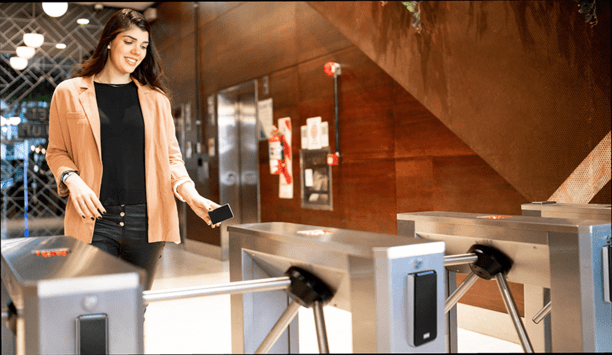
The truth behind 9 mobile access myths
Download
Access control system planning phase 2
Download
